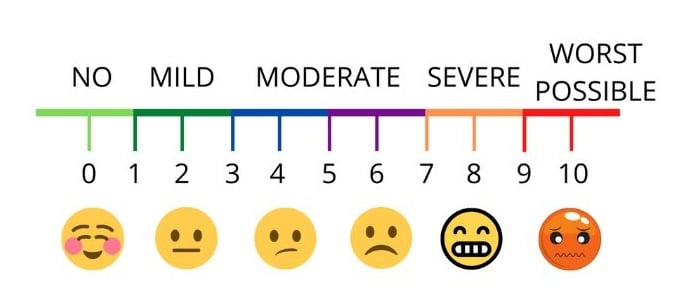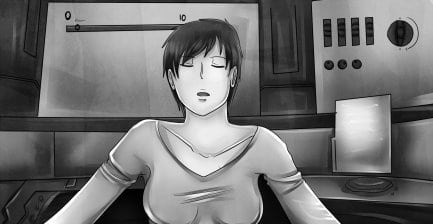Master Your Subconscious Mind with the Master Control Room Technique
What if you could switch your motivation on like a light bulb? Imagine effortlessly cranking up your inner drive—a sudden surge of energy that propels you to action. Sound too good to be true? Perhaps, but science and experience suggest otherwise.
Let’s explore a practical method that taps into the incredible power of your subconscious mind: the Master Control Room technique.
This simple yet powerful approach can help you fine-tune your motivational intensity for work, study, or fitness. By the end of this post, you’ll have actionable steps to elevate your motivation and take charge of your inner resources. Let’s dive deeper into how you can master your subconscious mind.
The Psychology Behind Motivation
The subconscious mind—that hidden part of us that drives much of our behaviour—is a powerhouse. Studies show that up to 95% of our daily actions are influenced by subconscious processes.
Think of it as the operating system of your mind, running quietly in the background. By learning to communicate with it, you can access untapped reserves of motivation.
The assertion that up to 95% of our daily actions are influenced by subconscious processes is supported by various sources:
- An article in The Oklahoman references scientific estimates indicating that approximately 95% of brain activity is unconscious, encompassing habits, automatic body functions, creativity, emotions, and more.
- Gail Marra, a clinical hypnotherapist, notes that today’s science estimates that 95% of our brain’s activity is unconscious, meaning that the majority of our decisions, actions, emotions, and behaviours depend on the 95% of brain activity beyond conscious awareness.
- An article on Thrive Global discusses how the subconscious mind takes up about 95% of our brain power, handling everything our body needs to function properly and influencing our thoughts, beliefs, feelings, and actions.
These sources highlight the significant role of the subconscious mind in governing our daily behaviours and actions.
Visualisation is one of the most effective ways to connect with your subconscious. The Master Control Room technique leverages your imagination to adjust your inner motivational settings, much like tweaking dials and switches on a control panel.
But how does this process work? It’s simpler than you think and can yield transformative results with consistent practice.

Step 1: Gauge Your Current Motivation Level
Before diving into the technique, establish a baseline. On a scale of 1 to 10, where does your motivation sit for the task at hand? Trust your instincts here—there’s no right or wrong answer. Setting this benchmark allows you to measure your progress.
Consider the specific task you want to tackle. Is it a demanding work project, a long-overdue study session, or a fitness routine you’ve been putting off? Each goal might require a different level of motivational intensity. Define where you want your motivation to be. Aiming for an 8 or 9 can be realistic and achievable with practice.
Once you’ve defined your goal, you’re ready to step into your mind’s control room. This step lays the groundwork for meaningful change.
Step 2: Enter Your Master Control Room
Take a moment to relax. If you’re familiar with self-hypnosis, this is an excellent time to use it. Otherwise, a few deep breaths will suffice. The key is to calm your mind and prepare it for focused visualisation. Now, close your eyes and imagine yourself standing before a door—the entrance to your mind’s Master Control Room.
Notice its details. Is the door large or small? What colour is it? Does it have any unique textures or markings? Push it open and step inside. This is the hub of your subconscious mind, where every function—from emotions to physical sensations—is regulated.
As you look around, observe the array of control panels. Each one governs a different aspect of your inner world. These panels may hum softly, emit faint lights, or remain still and silent. Let your attention be drawn to the panel labelled “Motivation.” This is where the magic begins.
Step 3: Adjust the Motivation Dial
Now, approach the motivation control panel. Examine its features—perhaps it’s buzzing with energy or glowing softly. On this panel, you’ll find a dial marked with numbers from 0 to 10. Notice the current setting.
Slowly, reach out and turn the dial upward. Hear the click as it moves, or imagine a soft hum as the intensity rises. Visualise the indicator climbing to your desired level. Whether it’s a 7, 8, or higher, you’ll know instinctively when it’s just right.
As you adjust the dial, pay attention to how your body feels. Are you sitting up straighter? Is there a spark of excitement building within you? These sensations signal that your subconscious mind is responding. Once the dial is set, activate a switch or button to lock it in place. Feel the certainty of your new motivation level settling in. This is your moment of empowerment.
Step 4: Engage Your Senses for Reinforcement
To deepen the impact of this exercise, engage your senses. Imagine the sounds of the control room growing steadier or the lights on the panel glowing brighter as you lock in the changes. Visualise these shifts with as much clarity as possible. The more vivid the experience, the stronger the connection with your subconscious mind.
After locking in the changes, take a step back and observe the entire control room. Does it feel brighter, calmer, or more energised? Notice these subtle differences. They reinforce the idea that you’re now in charge of your motivational settings.
Step 5: Return to Full Awareness
Take a deep breath and step back from the panel. Walk back through the control room, exiting through the same door. Close it firmly behind you, knowing the changes you’ve made are locked in place. As you return to full awareness, stretch and reflect. How does your motivation feel now compared to before?
This step is crucial. It helps ground you in the present moment while integrating the adjustments you’ve made. Take a few minutes to journal your experience if you’d like. Writing can help solidify the changes and make them more tangible.

Mastery of Your Mind – Practice Makes Permanent
Revisit your Master Control Room regularly. The more you practice, the stronger the connection between your conscious and subconscious mind becomes. Over time, this technique conditions your psychological state, making elevated motivation a natural part of your routine.
To make this habit stick, schedule time for it. Perhaps include it in your morning routine or before tackling significant tasks. Tie it in with periods of using mindfulness practices. The beauty of this method lies in its adaptability. You can use it for a range of challenges, from overcoming procrastination to boosting energy for physical activity.
Beyond Motivation: Expanding Your Control Room Exploration
While the Master Control Room technique is powerful for enhancing motivation, its applications extend far beyond that. Explore other panels in your control room. Is there one for confidence, focus, or relaxation? You can adjust these settings too, tailoring your inner world to meet your needs.
This versatility makes the technique invaluable for personal and professional growth. By regularly engaging with your subconscious mind, you can achieve a deeper sense of self-mastery. It’s not just about fixing problems; it’s about unlocking your full potential.
Conclusion: Master Your Mind and Take Charge of Your Inner World
Mastering your subconscious mind is not a one-time event—it’s a lifelong journey. The Master Control Room technique offers a practical, accessible way to harness your inner resources and achieve your goals. Start small, stay consistent, and watch as your motivation and overall well-being transform.
Whether it’s for work, study, or fitness, the key is to take that first step. Enter your control room today and begin shaping your inner world to match the life you want to live. With every adjustment, you’re moving closer to becoming the best version of yourself.
Dr Tom Barber is a #1 bestselling author, integrative and existential psychotherapist and coach, supervisor, researcher, speaker, and co-founder of Self Help School. His work has spanned nearing 30 years, in which he has focussed on helping people all over the world to improve their knowledge and understanding of their psychological worlds. Tom regularly delivers courses and lectures in the UK, USA, Canada, Mexico, and across Europe. In addition, he maintains a private therapy and coaching consultancy from his base in Essex, and online.

